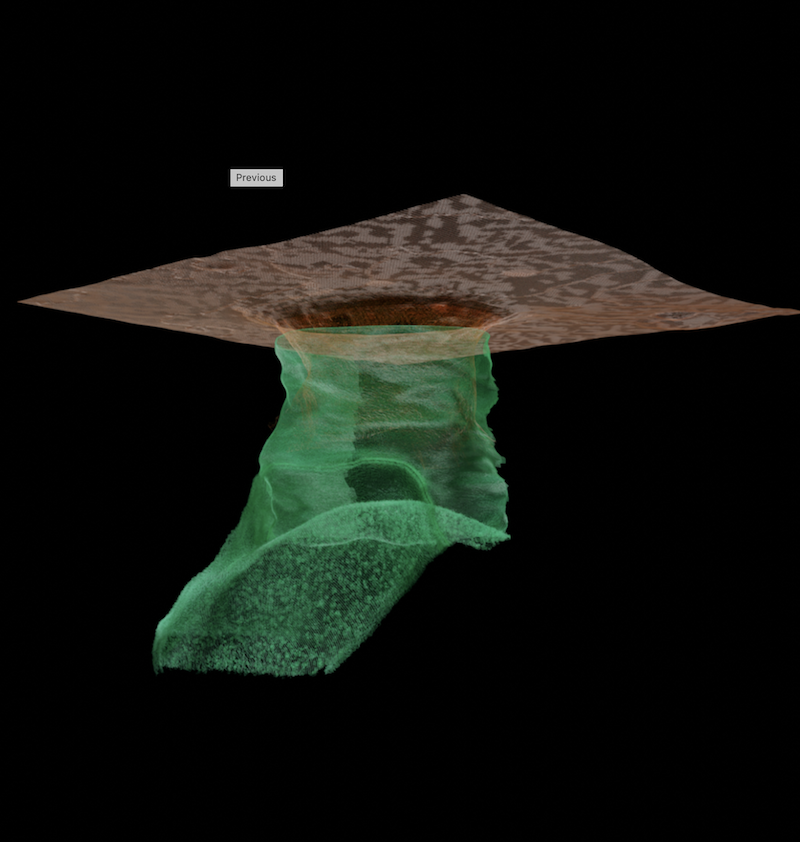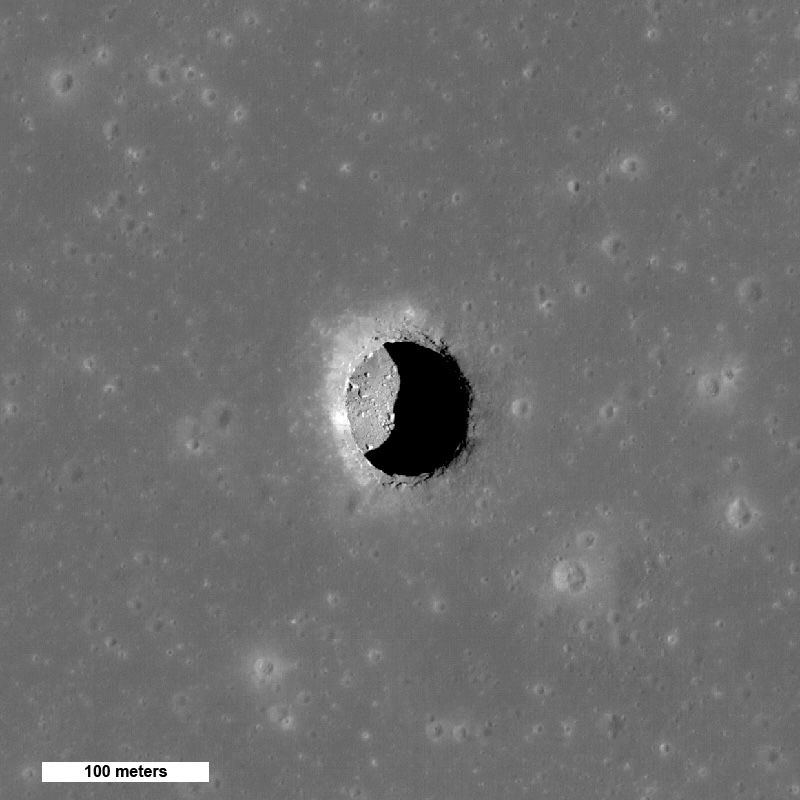- An international team of researchers said it has found the first confirmed lava tube on the moon. The lava tube is below the surface in Mare Tranquillitatis, the location of the Apollo 11 landing in 1969.
- The researchers used data from NASA’s Lunar Reconnaissance Orbiter to find the lava tube below a previously discovered cave-like pit.
- Lava tubes on the moon could be an exciting target for future exploration and used by astronauts for shelter.
1st confirmed lunar lava tube
For decades, scientists have debated the existence of lava tubes on the moon. A lava tube is a natural tunnel below the surface, formed by flowing lava. If the lava breaks out onto the surface, that creates a cave opening. On July 15, 2024, an international team of researchers, led by the University of Trento in Italy, said it has finally found an ancient lava tube on the moon. It’s the first potential confirmation of a lunar lava tube.
The lava tube is in the region Mare Tranquillitatis, also known as the Sea of Tranquility, where Apollo 11 landed in 1969. The researchers found the evidence for the lava tube in data from NASA’s Lunar Reconnaissance Orbiter (LRO).
The research team published their peer-reviewed findings in the journal Nature Astronomy on July 15, 2024.
Evidence for the 1st known lunar lava tube
Scientists have theorized the existence of lunar lava tubes for at least 50 years. It shouldn’t be too surprising, perhaps, since the moon has a well-established history of volcanic activity, even though eruptions ceased billions of years ago. But solid evidence of lava tubes on the moon has been elusive, until now.
Lorenzo Bruzzone, a professor at the University of Trento, said:
These caves have been theorized for over 50 years, but it is the first time ever that we have demonstrated their existence.
We’ve seen intriguing holes and pits in the lunar surface before. But do they actually lead to subsurface caves or lava tubes? As the paper stated:
Several potential subsurface openings have been observed on the surface of the moon. These lunar pits are interesting in terms of science and for potential future habitation. However, it remains uncertain whether such pits provide access to cave conduits with extensive underground volumes.

Analyzing data from Lunar Reconnaissance Orbiter
So how did the researchers discover the lava tube? The team reanalyzed data obtained in 2010 by NASA’s Lunar Reconnaissance Orbiter (LRO). To do this, they used a new signal processing technique to study the data. As Bruzzone explained:
In 2010, as part of the ongoing LRO NASA mission, the Miniature Radio-Frequency (Mini-RF) instrument acquired data that included a pit in Mare Tranquilitatis. Years later we have reanalyzed these data with complex signal processing techniques we have recently developed, and have discovered radar reflections from the area of the pit that are best explained by an underground cave conduit. This discovery provides the first direct evidence of an accessible lava tube under the surface of the moon.
Overall, the lava tube is estimated to be tens of meters long. The deep pit photographed by Lunar Reconnaissance Orbiter is the cave opening to this subterranean cavern. The pit has vertical or overhanging walls and a sloping floor.
Co-author Leonardo Carrer at the University of Trento added:
Thanks to the analysis of the data we were able to create a model of a portion of the conduit. The most likely explanation for our observations is an empty lava tube.

Fundamental questions about the moon
Scientists can use the radar data to not only learn more about the lava tube, but also address fundamental questions about the moon itself and how it formed. Wes Patterson is the Mini-RF principal investigator at the Johns Hopkins Applied Physics Laboratory. He noted that:
This research demonstrates both how radar data of the moon can be used in novel ways to address fundamental questions for science and exploration and how crucial it is to continue collecting remotely sensed data of the moon. This includes the current LRO mission and, hopefully, future orbiter missions.
On October 5, 2017, the Lunar Reconnaissance Orbiter captured a stunning view of the circular hole or pit in the surface. It now seems that, indeed, the hole leads to an underground lava tube, which is currently empty.
Also, in 2021, researchers at Carnegie Mellon University began designing and building a prototype for a small rover called PitRanger that could one day explore a lunar pit and lava tube. What discoveries might await in the lunar underworld?
Future moon base in a lunar lava tube?
In addition, future astronauts could also use pits and lava tubes on the moon for shelter. As well as exploring them, of course. In 2022, scientists found that some pits and caves have a permanent temperature of 63 F (17 C). Comfy! So, they would make ideal places for a lunar base. That’s significant, since temperatures on the moon reach extreme highs and lows, depending on whether the surface is in sunlight or darkness. In addition, solar radiation is much more intense than on Earth. Therefore, future astronauts will need safe locations to live in on the moon.
Bottom line: An international team of researchers said it has found the first evidence for an ancient lunar lava tube on the moon. It is located in Mare Tranquillitatis.
Source: Radar Evidence of an Accessible Cave Conduit below the Mare Tranquillitatis Pit
Via University of Trento
Read more: Moon caves and pits are a comfy 63 degrees
Read more: Meet PitRanger: Tiny rover designed to probe the lunar underworld